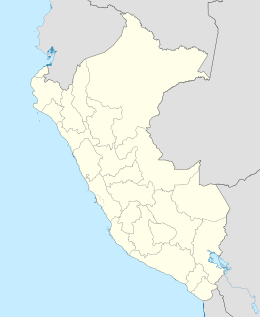 Partial view of Ballesta Centro Island. | |
| Geography | |
| Location | Pacific Ocean |
| Coordinates | 13°44′09″S76°23′47″W / 13.73583°S 76.39639°W |
| Major islands | Ballesta Norte, Ballesta Centro, Ballesta Sur |
| Administration | |
| Region | Ica |
| Additional information | |
| Time zone | |
The Ballestas Islands [1] [2] [3] (Spanish: Islas Ballestas) [4] are a group of small islands near the town of Paracas within the Paracas District of the Pisco Province in the Ica Region, on the south coast of Peru.

